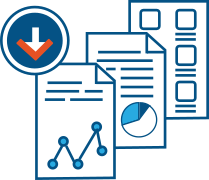A Procurement Automation Tool is a software application designed to automate key steps in the government procurement lifecycle, from acquisition planning and vendor evaluation to compliance verification and award decision support. These tools are increasingly used by federal agencies—and by GSA in particular—to streamline complex acquisition workflows, improve accuracy, reduce manual labor, and accelerate the pace of contract awards.
In the context of GSA and the Multiple Award Schedule (MAS) program, procurement automation tools are transforming how Contracting Officers, Program Managers, and acquisition teams process information, evaluate offers, and manage post-award tasks. For vendors, these tools often mean faster evaluations, more standardized reviews, and increased emphasis on clean, structured data.
Purpose and Benefits
Procurement Automation Tools are developed to address several core challenges in government acquisition, including:
- Excessive manual data entry
- Inconsistent compliance checks across offers and vendors
- Lengthy pre-award review cycles
- Fragmented decision-making and poor data visibility
- Human error in interpreting or applying federal acquisition regulations
When implemented effectively, these tools offer the following benefits:
- Faster procurement cycles through automated validation and data collection
- Improved accuracy and transparency in contract award decisions
- Reduced workload for Contracting Officers and acquisition staff
- Better supplier risk profiling and price reasonableness assessments
- Real-time analytics for category management and performance tracking
Key Features of Procurement Automation Tools
Most modern procurement automation tools include features such as:
1. Automated Compliance Validation
- Instantly checks vendor submissions against required criteria (e.g., SAM.gov registration, TAA compliance, socioeconomic status, Reps & Certs)
- Flags missing or inconsistent documentation before the CO begins manual review
- Ensures adherence to solicitation clauses and award thresholds
2. Document Pre-Processing and Scoring
- Uses AI or rules-based logic to extract key information from proposals
- Standardizes technical narratives, price proposals, and past performance summaries
- Ranks vendors based on predefined evaluation criteria
3. Data Collection and Integration
- Pulls data from internal systems (e.g., FPDS, FAS SRP, CPARS, SAM.gov)
- Organizes vendor records and compliance histories in centralized dashboards
- Integrates with GSA’s acquisition platforms like eOffer, eMod, and FCP
4. Workflow Automation
- Automates internal routing of documents for legal, technical, or policy review
- Tracks approval stages and decision points for audit purposes
- Sends notifications and deadline alerts to Contracting Officers and vendor POCs
5. Market and Price Intelligence
- Benchmarks proposed pricing against historical contract data
- Flags potential outliers or high-risk price structures
- Suggests market-based pricing ranges for specific SINs or labor categories
6. Audit and Reporting Functions
- Creates standardized pre-award or post-award reports
- Maintains full traceability of decisions and documentation
- Supports oversight, IG audits, and performance evaluations
Examples in Use
Several procurement automation tools are now being used or piloted within GSA and federal acquisition offices:
- CODY (Contracting Officer’s Decision Yard): GSA’s AI-powered tool for pre-award analysis and compliance checks during MAS evaluations
- FASt Lane Dashboards: Streamline internal review of contract offers from small or innovative vendors
- Price Point: Used to analyze price reasonableness across SINs and offer comparisons
- Agency-specific acquisition platforms: Tools developed by DoD, DHS, and VA to support automated procurement planning and vendor evaluation
These tools are part of a broader federal effort to modernize IT systems and eliminate paper-driven workflows.
Impact on Contractors
For contractors, the rise of procurement automation tools means:
- Greater emphasis on data clarity: Disorganized or vague proposal submissions may be flagged or deprioritized
- Faster review cycles: Structured, compliant offers may move through evaluation more quickly
- Less subjectivity: Automated tools help standardize evaluations, reducing reliance on individual interpretations
- More visibility into performance metrics: Your past sales, CPARS ratings, and pricing history may be algorithmically reviewed
- Increased pressure for catalog consistency: Misalignments between your proposal, catalog, and GSA Advantage! listing can affect award decisions
Contractors should proactively ensure that all submitted data is accurate, machine-readable, and fully compliant to avoid delays or disqualification during automated reviews.
Future Trends
Procurement automation is expanding rapidly across the federal government. Future developments may include:
- AI-powered negotiation support tools that suggest contract clauses or price ranges
- Predictive analytics to recommend acquisition strategies based on agency needs
- End-to-end digital acquisition platforms integrating all phases from planning to closeout
- Natural language processing (NLP) to interpret performance data, RFQs, and technical responses
- Supplier risk scoring systems to guide source selection and de-risk vendor pools
These technologies are likely to become standard across most GSA contract reviews, especially for high-volume or strategic categories like IT, professional services, and cybersecurity.
Conclusion
A Procurement Automation Tool is an essential innovation in the federal acquisition landscape, designed to increase speed, consistency, and compliance across the contract lifecycle. For GSA and agency buyers, these tools offer streamlined evaluation and data-driven decision-making. For contractors, they introduce both opportunities for efficiency and challenges that require greater attention to data quality and proposal structure. As GSA and other agencies continue to embrace digital acquisition strategies, procurement automation will become not just a support tool—but a foundational element of government contracting.


